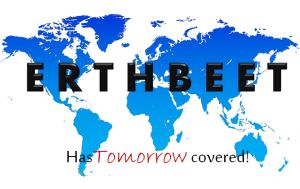Chronox
Development of a Global Time Zone
The Ertbeet Time project: Chronox was sectioned into three research frameworks over several years and was completed on time in each case. With the requirement being to create a Global Time Zone that worked independently of all defined time zones, didn’t come easily at first, but then the idea of tokenizing time, and then making it web-linkable came onto the design table, and from there research could begin.
Not only is there is no guide or manual on creating a new time zone for the world, there is also no guidance anywhere for building a synthesized time zone, which is essentially what has been required for the Universal Time Zone (UTZ).
Tokenizing and unifying time involved some initial HTTP and URL issues which, though challenging in 2014, became much easier to accommodate with newer and improved browser libraries that accommodated time exchange much better. There are technically more than 300 geo-political time zones, and being able to interpret and accommodate them all was a daunting research task. The problem with time now becomes a technical one, because time is used by a connected world using the internet, for which Daylight Savings Time (DST) is misinterpreted all over the world to begin with, and on top of that, it is re-scheduled by regions or even countries without proper or due notification.
Daylight Savings Time is now a very significant factor for maintaining time accurately on the internet. Because Daylight Saving Time is represented ambiguously in many regions or countries, the confusion caused by the DST time system just increases. It is the DST transitional hours that make DST so important, because they cause hours to be missed (at the start of DST) and they also cause hours to be duplicated – at the END of DST. This is highly significant, because the entire industrialized world can lose millions of dollars owing to a tracking or payroll system that fails as a result.
While our Universal Time Token Protocol (UTTP) has been tested and found to be sound, we must necessarily disclaim it from being 100% accurate, purely because time, which should be logical, sits upon such a messy platform that it is impossible to make time and DST black and white. Consequently we are now endeavoring to create a new time zone code-signifier system that will remain perpetually accurate and referencable for the world.
In other words, we are taking on the task of universally labeling the time zones with functional, numeric time zone identifiers. Because time is so important, this work needs to be done, and we hope to be very soon presenting the table as a proposal to various of the appropriate bodies for input and acceptance.
The concept of Erthbeet Time is tokenized time that will translate into the time zone it is in, by means of a Universal Time Link, which will return the token back to a decoding site for decoding against the time zone of the recipient. The main problem with the system isn’t so much technical, as is gaining world confidence in the system, which will appear to either take time, or indeed may never happen.








